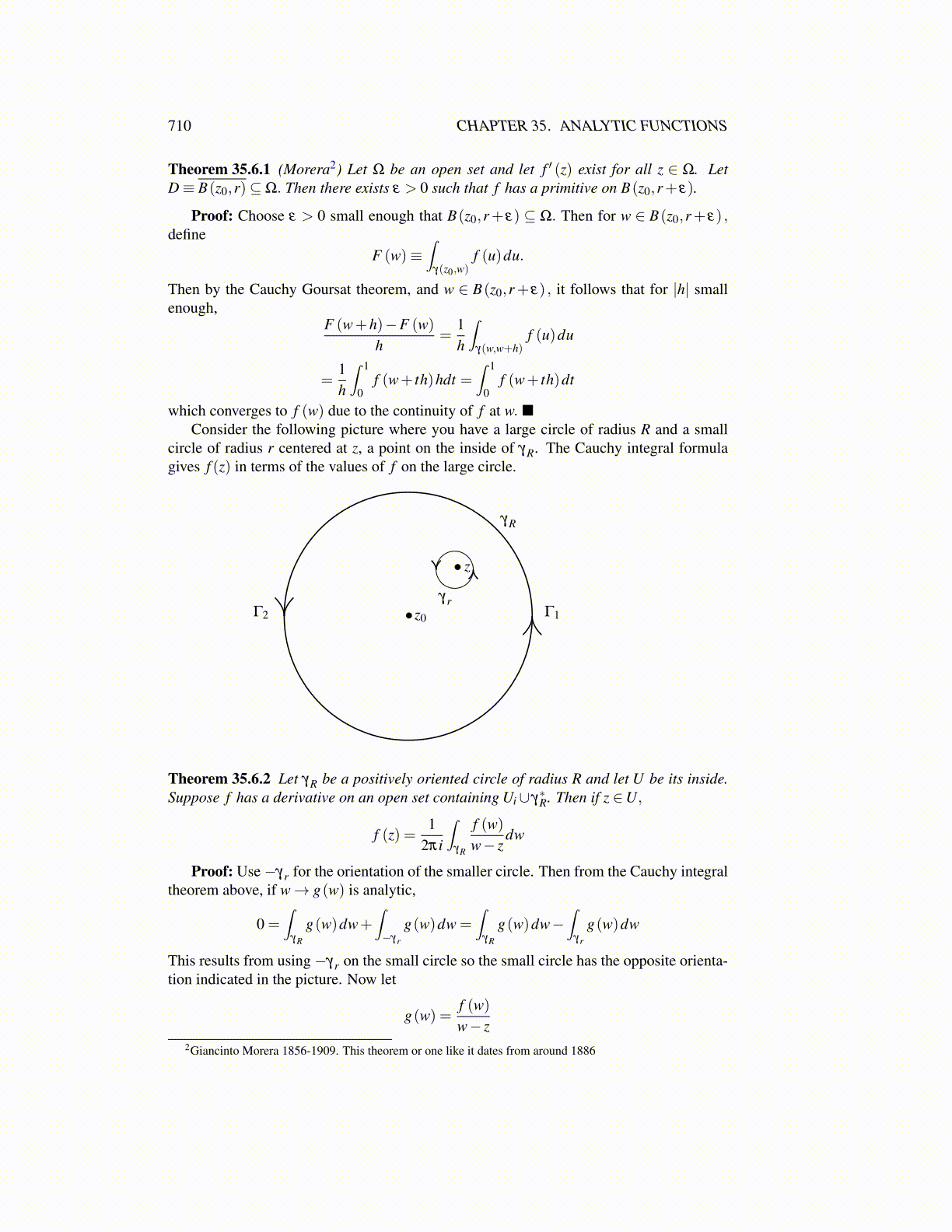
710 CHAPTER 35. ANALYTIC FUNCTIONS
Theorem 35.6.1 (Morera2) Let Ω be an open set and let f ′ (z) exist for all z ∈ Ω. LetD≡ B(z0,r)⊆Ω. Then there exists ε > 0 such that f has a primitive on B(z0,r+ ε).
Proof: Choose ε > 0 small enough that B(z0,r+ ε) ⊆ Ω. Then for w ∈ B(z0,r+ ε) ,define
F (w)≡∫
γ(z0,w)f (u)du.
Then by the Cauchy Goursat theorem, and w ∈ B(z0,r+ ε) , it follows that for |h| smallenough,
F (w+h)−F (w)h
=1h
∫γ(w,w+h)
f (u)du
=1h
∫ 1
0f (w+ th)hdt =
∫ 1
0f (w+ th)dt
which converges to f (w) due to the continuity of f at w. ■Consider the following picture where you have a large circle of radius R and a small
circle of radius r centered at z, a point on the inside of γR. The Cauchy integral formulagives f (z) in terms of the values of f on the large circle.
• z
γR
γrΓ1Γ2 •z0
Theorem 35.6.2 Let γR be a positively oriented circle of radius R and let U be its inside.Suppose f has a derivative on an open set containing Ui∪ γ∗R. Then if z ∈U,
f (z) =1
2πi
∫γR
f (w)w− z
dw
Proof: Use−γr for the orientation of the smaller circle. Then from the Cauchy integraltheorem above, if w→ g(w) is analytic,
0 =∫
γR
g(w)dw+∫−γr
g(w)dw =∫
γR
g(w)dw−∫
γr
g(w)dw
This results from using −γr on the small circle so the small circle has the opposite orienta-tion indicated in the picture. Now let
g(w) =f (w)w− z
2Giancinto Morera 1856-1909. This theorem or one like it dates from around 1886